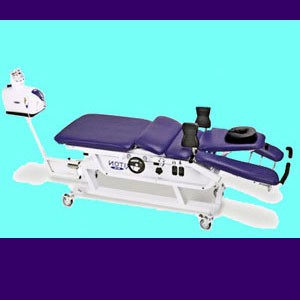
Sacroiliac treatment options are mostly identical to conservative treatment of any lumbar back ache condition, with a few notable exceptions. In fact, the striking similarity of many actual back pain symptoms and sciatica syndromes adds a confusing element to the diagnosis of SI joint concerns.
SI joint pain treatments have become big business within the healthcare system, since most are continued long-term to provide ongoing relief. Very few therapies stand much hope for curing the underlying reason for pain, given that the diagnosis of sacroiliac pain is indeed even correct.
This guide helps patients to navigate the sacroiliac joint pain treatment sector, as well as decide if treatment is even needed given the diagnostic evidence presented.
Sacroiliac Treatment Options
There are several treatment methods used in a progressive cycle to achieve sacroiliac pain relief:
Physical therapy is often the first prescription given to a patient. Exercises and stretches will be used to strengthen and tone the sacroiliac ligaments. This is universal for patients diagnosed with sacroiliac joint dysfunction, but is still used illogically for many instances of sacroiliitis, as well.
Chiropractic is often part of a complementary joint care treatment program. Chiropractors will use general and SI-specific manipulations to treat a variety of causative pain syndromes in the sacroiliac region.
Massage therapy is used to relax tense lower back muscles and ligaments. This provides more general wellness benefits than specific pain relief from any SI joint concern.
Pain management drugs are a common and dangerous treatment method. Drugs have known and unknown side effects and some expose the patient to the risk of addiction.
Back pain injections are often given directly into the painful SI joint. These injections must be renewed regularly and often have a reduced effect with each successive round of treatment. Prolotherapy may be substituted for anesthetic nerve blocks and may be useful for some soft tissue diagnoses.
Back surgery is an extreme option for advanced cases of SI joint pain. Luckily, most SI joint issues are treated nonsurgically.
Sacroiliac Knowledge Therapy
True SI joint pain is rare. Many patients using knowledge therapy will recognize that their diagnosed SI pain is really due to some maladaptive psychological response to life stressors or repressed emotions. Psychological back pain can strike anywhere and may use the SI joint as its primary or secondary target.
Patients must be reminded that mindbody health conditions are universal in humans and span the full range of potentially symptomatic syndromes. Unfortunately, these mindbody pain conditions are almost never considered as source processes for most physical pain by doctors, who generally prefer to stay the course of the Cartesian hardline. Basically, if pain can be linked to even the most illogical structural issue, instead of being tied to the mindbody process, then so be it.
It is this antiquated and unenlightened attitude which has caused so many to endure chronic pain for years of their lives. Always be sure to consider every possible explanation for pain before deciding on treatment.
Sacroiliac Treatment Analysis
Millions of people are diagnosed and treated with traditional and alternative medical therapies for SI joint pain each year. Very few ever recover. Most continue to search for that magic bullet, but only find disappointment after disappointment. Only a small percentage realize that the treatments are not wrong, but instead, the diagnosis is sometimes flawed. These are the few who find relief after pursuing the actual reason for their pain with passion and determination.
Even when the diagnosis of SI joint pain is truly 100% correct, the patient still has a tough job learning enough to responsibly choose the best course of treatment. Remember that most methods of care will do nothing to resolve the actual source of pain, be it ligament issues or joint deterioration. Most will only target the pain enacted by the underlying mechanism and make the condition more livable. Many of these symptomatic therapy modalities have serious risks, both to health and finance.
If you need sacroiliac treatment, be sure to examine the pros and cons of each option and discuss these with your doctor in great detail. If you feel pressured to choose a treatment, it is likely because that is the one which will make your physician or chiropractor the most money. I hate to say it so bluntly, but it is the truth in so many instances. Do not let anyone choose for you. Make your own decisions based on the facts and potential risks of care. If your doctor is not cooperative, then it is time to fire them and get a doctor who actually cares about you and not just your money.





